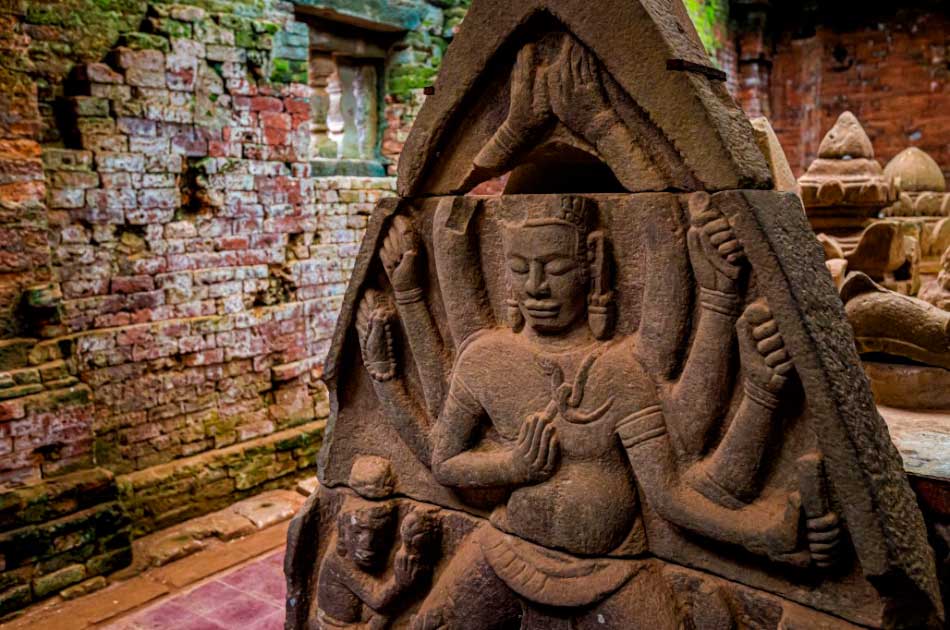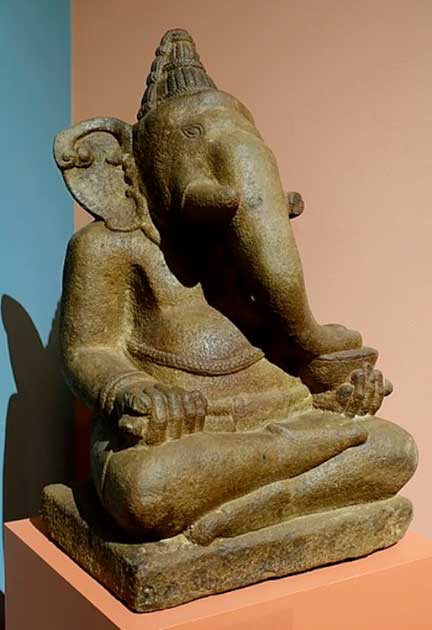The spread of religion through Asian history is relatively well understood, as the teachings of the various competing schools of religious thought vied for dominance of the melting pot of civilizations. The Vietnamese, for example, were converted to the teachings of Buddhism during the second century AD by Indian and Chinese monks.
But if this is the case, how did a Hindu temple come to be the spiritual and political center of Vietnam’s most formidable empires? What exactly was the My Son Sanctuary and why was it so significant?
The Genesis of the Champa Kingdom
During this period, Vietnam was ruled by the Chinese Han dynasty who had conquered them in 111 BC. But when the Han collapsed in the second century AD, a new empire, the Champa Empire, rose from Hue in central Vietnam. This Empire would go on to rule from the fourth to the thirteenth century AD and become a dominant force in the region across both land and water.
The Champa Empire ruled all of central Vietnam, from the border of the Quang Nam province down as far as the southern border of Binh Thuan Province. The Champa dynasty soon gained control of the commerce in the global spice and silk trade which had to sail across the Champa Sea (now known as the South China Sea).
The governing Champa empire had to give its consent before traders from India, Indonesia, Persia, China, Taiwan, Malaysia, and Japan were allowed to transact business in their seas. And of course they extracted heavy levies for doing so.
As the empire expanded, so did its beliefs and traditions, and several cultural influences came from the various traders passing through the Champa Sea. Hinduism, which originated in India, quickly swept throughout Vietnam, which had previously been a country dominated by Buddhism.
The Kingdom of Champapura
All the clans of the Champa Empire in Vietnam were successfully unified in 192 AD by the Dua Chan clan. They founded Champapura, which translates from Sanskrit to “the city of the Cham people”, to immortalize this new monarchy. Quang Nam Province was the chosen location as it was said to be the Cham empire’s holy territory.
The Sa Huynh ethnic group historically resided in Quang Nam Province in central Vietnam, and had done so since about 1,000 BC. Most of the people in their community were farmers and fishermen. At the beginning of the 4th century AD when the ruling Dua Chan decided to construct the Kingdom of Champapura, they chose to build on the ancestral home of their descendants, the Sa Huynh.
- Temple, Spire or Alien Landing Pad? The Mystery of Somapura Mahavihara
- Pyu City-States: What Happened to the Ancient Peoples of Myanmar?
An Indianized Shivite Hindu temple of worship was built in Duy Phu Village, Duy Xuyen District, Quang Nam. The temple was named My Son, meaning beautiful mountain, and was built on the elevated ground amongst a valley of mountains that protected the sacred Thu Bon River.
The My Son Sanctuary
Mount Meru is a mythical mountain believed by Hindus to be the center of the universe and home of the Hindu gods. By constructing the My Son Sanctuary at the foothills of Hon Quap Mountain, the source of the holy Thu Bon River, the Cham monks believed they were recreating the center of the universe in the center of what was to be the new Champa Empire.
The site is traversed by the Thu Bon River, which was used for the most revered Cham rituals. From there, it travels through other Champa Kingdom territories before flowing into what was originally the Champa Sea near the ancient port city of Hoi An. Hoi An continues to be a major silk and other fine fabric trading hub today.
The temples at My Son underwent continuous development under the Champa’s ten-century rule, and the site flourished as a result. The buildings of the fourth century were initially made of wood, but after a fire that destroyed the bulk of them the ancient builders were forced to reconsider their construction techniques.
Rebuilt with wood and red-fired brick, the new temples were more fire resistant and took on a more striking appearance. The red bricks stood out dramatically in contrast to the dense jungle that surrounded them. Hindu mythological stories were portrayed in relief sculptures that adorned the sandstone exteriors.
Shiva, the supreme deity of Hinduism and a guardian deity who is known for destroying evil, is the main god portrayed throughout My Son. Shiva was revered by Champa monks for guarding the Champa kingdom.
The main purpose of the My Son Sanctuary location was for the monks to conduct religious rites for the governing Champa dynasty, and when these monarchs passed away, they would be buried here. The belief was that admiration and praise of Shiva would aid the dynasty to reach the Hindu gods of Mount Meru when they pass.
Worshipping the Supreme Absolute
The serene and otherworldly Mount Meru was credited for much of the inspiration for the embellished structural designs. Elephants, lions, snakes, and dragons are just a few of the sacred animal icons that can be found in the ancient site.
My Son, the most significant place of devotion in the Champa culture, contains relief sculptures of the Hindu deities Vishnu, known as “the god that preserves and protects the cosmos,” and Krishna, known as “the god of compassion, tenderness, and love.”
- The Great Bell of Dhammazedi: Where is the Largest Bell Ever Made?
- Operation Wandering Soul: Ghosts in the Vietnam War?
Throughout My Son Sanctuary there are a total of seventy-one monuments in eight groups, some of which are still buried beneath more recently constructed temples. In addition to prayer rooms, the monument also has bathhouses, treasure vaults, and holding rooms containing statues of deities and guardians.

The My Son Sanctuary has undergone numerous preservation and reconstruction attempts, but it was challenging due to World War II and the First Indo-China War. The archaeological site was rediscovered in 1898, whilst Viet Nam was under French occupation.
With the assistance of nearby farmers, French academic M.C. Paris uncovered the archaeological site. It had been engulfed by the jungle, calling for an extensive restoration job.
What researchers discovered was that the last temple at My Son had been built in the 13th century AD. This would be consistent with the common belief that the Champa people were driven off their sacred land when the Dia Viet people were emancipated from the Chinese after a millennium of occupation.
In an effort to further liberate and regain their home, newly freed northern Dia Viets marched down to the south. The Dia Viet, under the leadership of Emperor Minh Mang, inexorably sought complete autonomy and disagreed with the Cham people’s Hindu beliefs. After being forced further south, the Cham people struggled and eventually migrated to neighboring Cambodia in search of refuge.
A Ruin in Ruins
However, the 20th century has not been kind to My Son. After the devastating second Indo-China War, the sanctuary was severely damaged. In order to escape the Americans, the communist rebel Viet Cong sought refuge in the temple. When the Americans discovered them, they carpet bombed the area for a full week, dropping B-52 bombs nonstop, and demolishing a sizable number of historic temples.
Following the 1975 reunification of Vietnam, local authorities started restoring and saving some damaged structures with the aid of French and Polish conservation organizations. Although many of the bomb craters are still visible, it is more concerning that this tourist destination is thought to have unexploded bombs in the buffer zones.
My Son Sanctuary served as a key to comprehending the Champa Kingdom in many ways because it underwent additions and modifications during the ten centuries of the empire’s rule. These modifications aid in our comprehension of the historical progression and mutating development of the Champa Empire’s political and religious views.
Indeed, this site, which was the longest continuously inhabited archaeological site in Indochina, helped historians comprehend how the Champa people’s veneration of Hindu gods affected their long-lasting culture.
Top Image: Nothing remains of the My Son Sanctuary but ruins. Source: Balate Dorin / Adobe Stock.
By Roisin Everard
